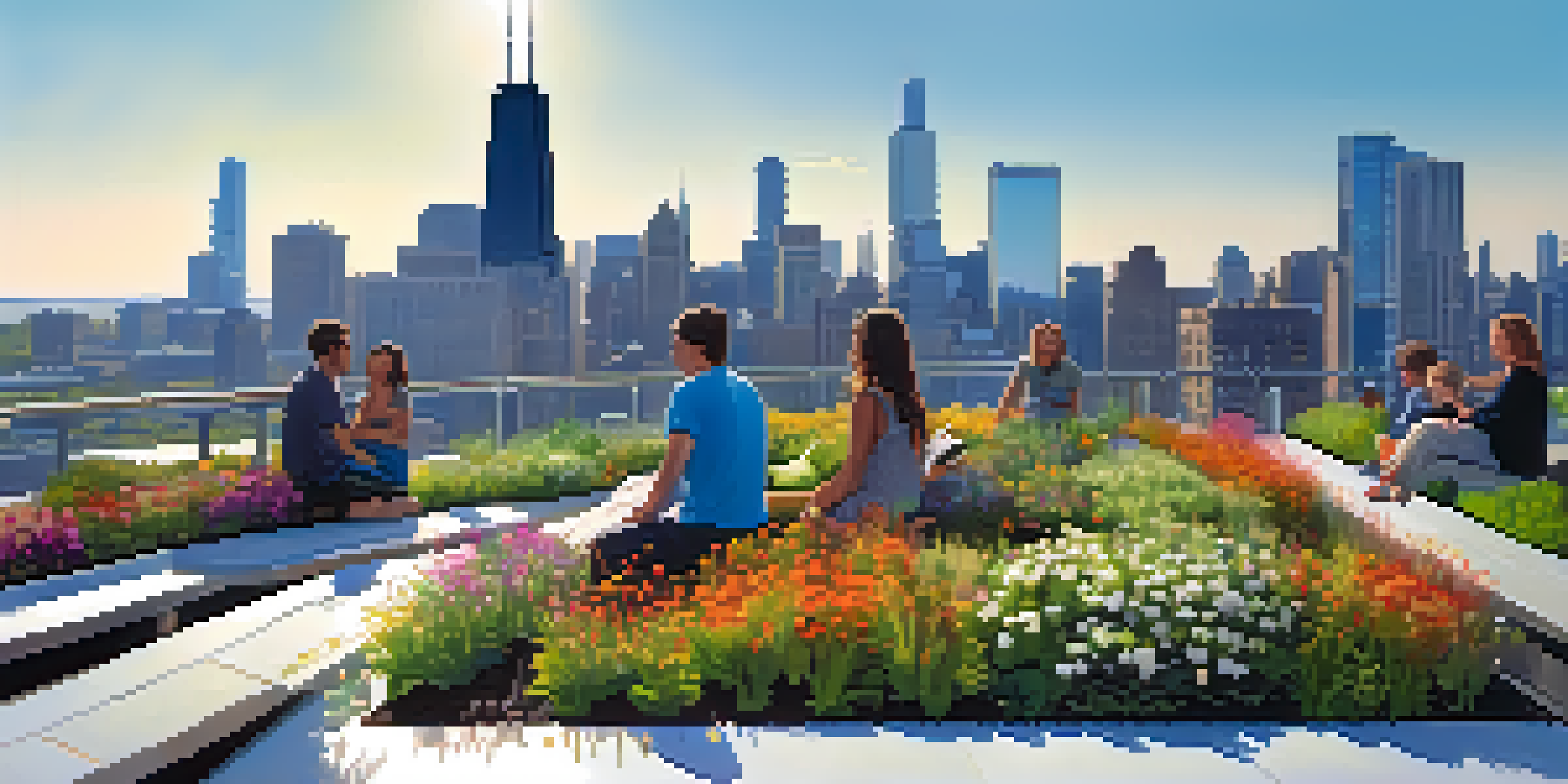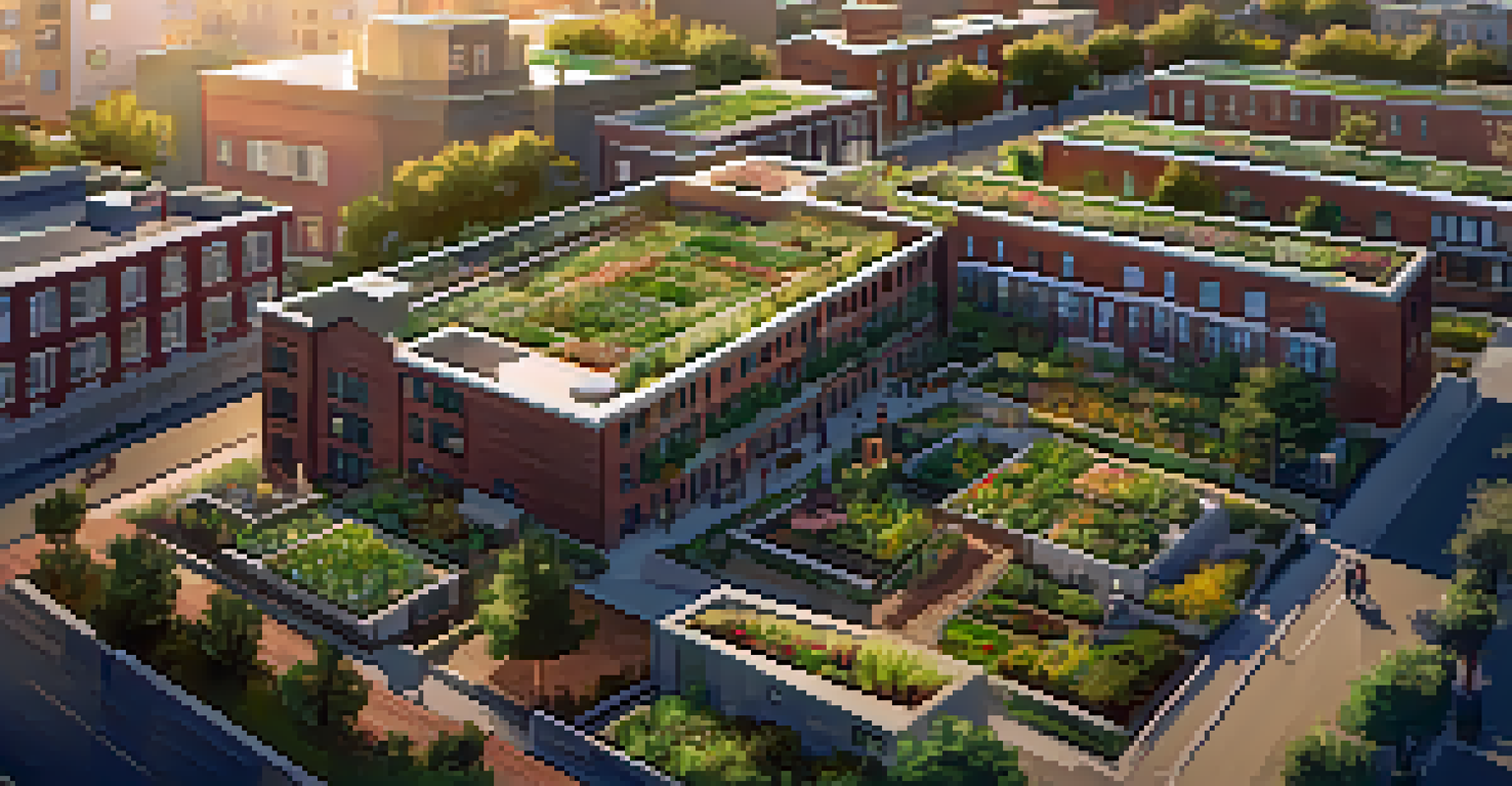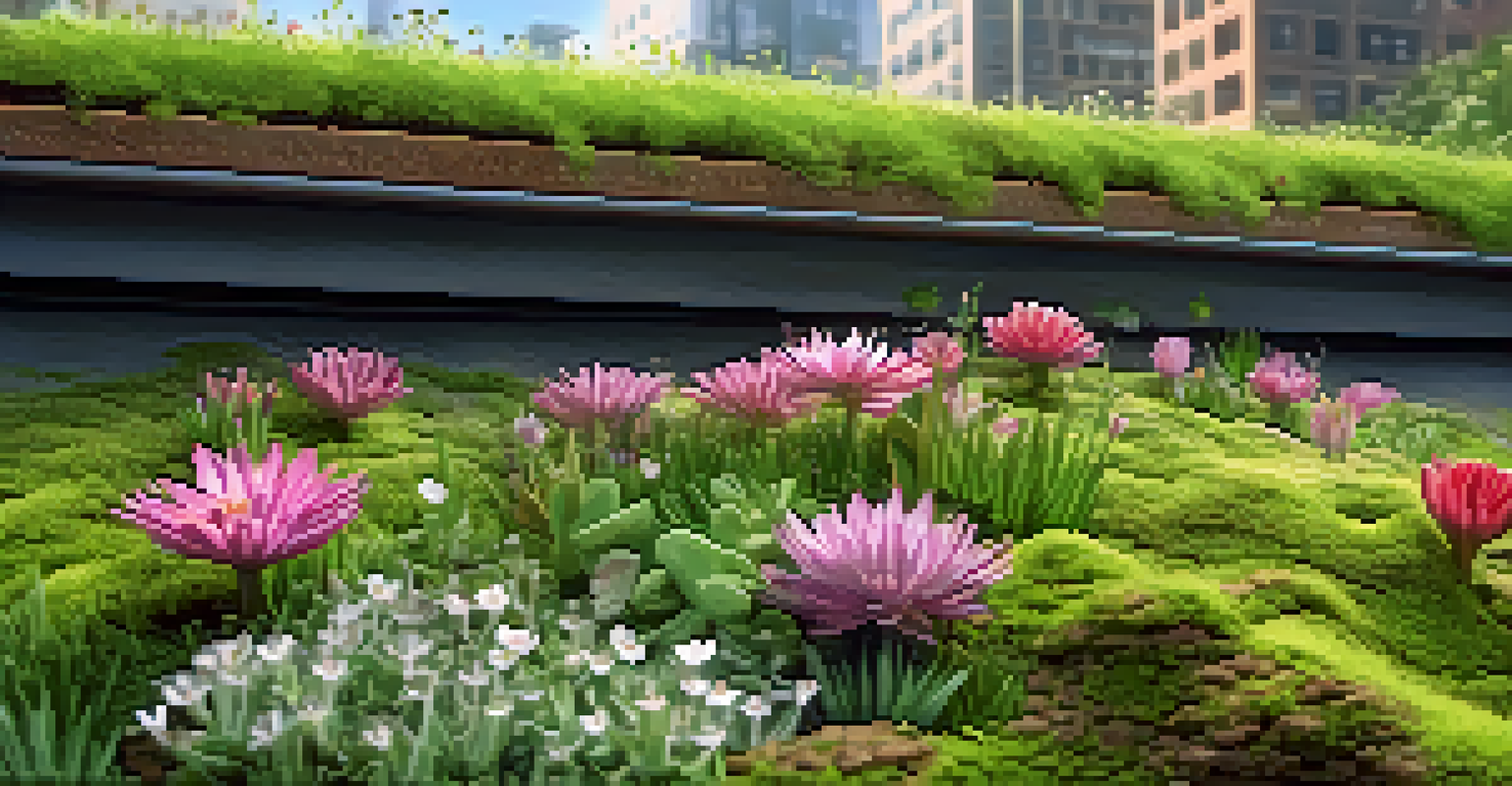Chicago's Green Roofs: Sustainability in Urban Planning

The Rise of Green Roofs in Chicago
In recent years, Chicago has emerged as a leader in urban sustainability, particularly through its innovative green roofs. These rooftop gardens not only beautify the skyline but also contribute significantly to environmental health. With the city's commitment to the Cool Roof Program, many buildings have embraced green roofs as a way to reduce heat absorption and improve air quality.
Green roofs are vital components of urban resilience, helping cities adapt to climate change while enhancing the quality of life for their residents.
The increase in green roofs can be attributed to various factors, including government incentives and growing public awareness of climate issues. For instance, the City of Chicago offers grants and tax incentives to property owners who install green roofs, making it an attractive option for developers. This initiative has sparked a wave of interest from businesses and residents alike, eager to participate in creating a greener city.
Additionally, the aesthetic appeal of green roofs cannot be overlooked. They provide a refreshing contrast to the concrete jungle, offering green spaces for relaxation and recreation. This transformation of underutilized spaces into lush, vibrant areas enhances the overall quality of life in the city.
Environmental Benefits of Green Roofs
Green roofs serve as crucial tools in combatting urban heat islands, a common problem in cities where concrete and asphalt absorb heat. By incorporating vegetation, these roofs help cool buildings and reduce energy consumption, which is a win for both the environment and the wallet. Studies show that green roofs can lower indoor temperatures by up to 30%, significantly easing the demand for air conditioning.

Moreover, green roofs play a vital role in stormwater management. They absorb rainwater, preventing runoff and reducing the burden on urban drainage systems. This is particularly important in a city like Chicago, where heavy rains can lead to flooding and water pollution. By capturing rainwater, green roofs help maintain water quality and support local ecosystems.
Green Roofs Boost Urban Sustainability
Chicago's green roofs enhance environmental health, reduce energy consumption, and support biodiversity.
Finally, the biodiversity that green roofs foster is a noteworthy benefit. They provide habitats for various species, including birds, insects, and plants, which are often scarce in urban environments. This increase in biodiversity contributes to more resilient ecosystems and enhances the city's natural beauty.
Economic Advantages of Green Roofs
Investing in green roofs can lead to significant economic benefits for property owners and local governments. By reducing energy costs and extending the life of roofing materials, green roofs can provide a strong return on investment over time. Some studies estimate that energy savings alone can offset the initial installation costs within a few years.
The green roof is not just a roof; it’s an extension of the urban ecosystem, providing habitats and promoting biodiversity in the heart of the city.
Additionally, green roofs can increase property values, making buildings more attractive to potential buyers or tenants. In a competitive real estate market, properties with green roofs can stand out, offering a unique selling point. This trend has already been observed in Chicago, where buildings with green roofs often command higher rental rates.
Beyond individual properties, the broader economic impact is noteworthy. As Chicago continues to invest in green infrastructure, it attracts businesses focused on sustainability. This creates jobs and stimulates economic growth, making the city a hub for green innovation and technology.
Community Engagement and Green Roofs
One of the most compelling aspects of green roofs is their ability to engage communities and foster a sense of ownership. Many green roof projects involve local residents in their design and maintenance, turning these spaces into community hubs. This collaborative approach encourages people to connect with nature and with each other, fostering a spirit of camaraderie.
Educational initiatives surrounding green roofs also play a vital role in community engagement. Schools and local organizations often participate in workshops or programs that teach residents about the benefits of green infrastructure. By increasing awareness and knowledge, these programs empower individuals to advocate for sustainable practices in their neighborhoods.
Economic Benefits of Green Roofs
Investing in green roofs can increase property values and stimulate local economic growth.
Moreover, community gardens on green roofs can provide fresh produce for local residents, promoting food security and healthy eating. These gardens not only beautify the space but also serve as a reminder of the importance of sustainable living—an essential lesson for future generations.
Challenges in Implementing Green Roofs
Despite the numerous advantages of green roofs, there are challenges that must be addressed for broader implementation. Initial installation costs can be a barrier for many property owners, particularly smaller businesses and homeowners. However, as awareness grows and technology improves, these costs are gradually decreasing, making green roofs more accessible.
Another challenge is the ongoing maintenance required to keep green roofs healthy and thriving. Unlike traditional roofs, green roofs need regular care, including watering, weeding, and monitoring plant health. This can be a deterrent for property owners who may not have the resources or time to commit to such upkeep.
Additionally, structural considerations are crucial when installing a green roof. Not all buildings are equipped to handle the added weight of soil and vegetation. Engineers and architects must work together to ensure that the buildings can support these systems safely, which may complicate the process for some projects.
Case Studies: Successful Green Roof Projects
Chicago boasts several successful green roof projects that exemplify the city's commitment to sustainability. One notable example is the City Hall green roof, which was one of the first in the United States. This iconic project has not only provided environmental benefits but has also served as a model for other cities looking to implement similar initiatives.
Another impressive project is the green roof atop the Hotel Lincoln, which features a rooftop garden that not only supports local wildlife but also offers stunning views of Lincoln Park. This integration of nature and hospitality has drawn attention from both tourists and locals alike, creating a unique space for relaxation and enjoyment.
Community Engagement through Green Spaces
Green roofs foster community involvement and promote sustainable living through education and local gardening initiatives.
These projects highlight the potential of green roofs to transform urban areas into thriving, green spaces. With their success, more buildings are likely to follow suit, further solidifying Chicago's position as a leader in sustainable urban planning.
The Future of Green Roofs in Chicago
As the movement for sustainability continues to gain momentum, the future of green roofs in Chicago looks promising. With increasing awareness of climate change and its impacts, more stakeholders are recognizing the importance of integrating green infrastructure into urban planning. This shift in mindset is likely to lead to even more green roof initiatives in the coming years.
Moreover, advancements in technology and design are making green roofs more viable than ever. Innovations such as modular green roof systems and improved plant selections can simplify installation and maintenance, making it easier for property owners to adopt these systems. As these technologies evolve, we can expect to see a wider variety of green roof designs tailored to different building types.

Ultimately, the future of Chicago's green roofs is about more than just aesthetics or environmental benefits; it's about creating a livable, sustainable urban environment for all. As the city embraces this green revolution, residents can look forward to a healthier, more vibrant cityscape for generations to come.